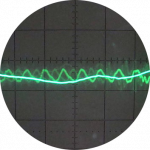Is it mad to think there should be a minimum SCOP for UK heat pump installs?
Is it crazy to think that every UK heat pump installation should have to meet a minimum SCOP value?
We’ve now got tens of thousands of heat pumps going in, and yet there’s no performance benchmark for what’s actually considered “good”. MCS and installers can say a system is “working”, but what does that mean if it’s running with a SCOP of 2.2 and the house still struggles to hit 21C?
Heat pumps are incredibly easy to monitor and we can see exactly how they’re performing. So why not draw a clear line in the sand?
For example: anything below a SCOP of 3 (at 21C) is sub-par. Anything above is acceptable.
No more guesswork. No more arguments about “every home is different”. Just a clear, fair, measurable standard that protects homeowners and gives everyone clarity.
What do you think? Fair idea or unrealistic?
Get a copy of The Ultimate Guide to Heat Pumps
Subscribe and follow our YouTube channel!
BUS requires minimum SCOP of 2.8, see https://www.legislation.gov.uk/uksi/2022/565/regulation/9
Building regulations require
Reasonable provision shall be made for the conservation of fuel and power in buildings by—
(a) limiting heat gains and losses— (i) through thermal elements and other parts of the building fabric; and (ii) from pipes, ducts and vessels used for space heating, space cooling and hot water services;
(b) providing fixed building services which— (i) are energy efficient to a reasonable standard; (ii) have effective controls; and (iii) are commissioned by testing and adjusting as necessary to ensure they use no more fuel and power than is reasonable in the circumstances.
The requirements, at least arguably, already exist, the problem is enforcement.
4kW peak of solar PV since 2011; EV and a 1930s house which has been partially renovated to improve its efficiency. 7kW Vaillant heat pump.
@jamespa, I don’t think that’s quite right. The regulation you’re referring to doesn’t require the installed system to achieve a SCOP of 2.8… it says the heat pump unit itself must have a seasonal coefficient of performance of at least 2.8, based on the Secretary of State’s approved test method (whatever that’s supposed to mean).
That figure comes from laboratory testing of the unit (including some dodgy Chinese labs), not from how the full system performs once it’s installed in someone’s home.
So in practice, we still don’t have a benchmark for real-world system performance. Until we start measuring and setting minimum in-situ performance values, poor installs will continue to slip through the net IMO.
Get a copy of The Ultimate Guide to Heat Pumps
Subscribe and follow our YouTube channel!
Posted by: @editor@jamespa, I don’t think that’s quite right. The regulation you’re referring to doesn’t require the installed system to achieve a SCOP of 2.8… it says the heat pump unit itself must have a seasonal coefficient of performance of at least 2.8, based on the Secretary of State’s approved test method (whatever that’s supposed to mean).
That figure comes from laboratory testing of the unit (including some dodgy Chinese labs), not from how the full system performs once it’s installed in someone’s home.
Fair enough, I stand corrected, my apologies.
In that case its currently down to the protection (if any) provided by Building Regs. The requirement is quite general however the guidance is more specific and says that, "in the opinion of the Secretary of State" (the phrase used in the guidance) the requirement is met if the heat pump has a SCOP of 3 for space heating and 2 for DHW (which is interesting - you can get the BUS grant for a heat pump that does not meet the guidance in the building regs). A test method is specified and it is, I believe, the one applying to heat pump units not systems, so same problem.
Since your question asks - is it mad?, lets examine this specific question, or to turn it around, is it practical?. To be practical as a piece of law you need to be able to define a test method which is sufficiently cheap and robust and enforceable. You will need to specify reference points and a test method.
I could imagine defining a test method where the reference points for output are the pipes which directly feed the emitters (ie beyond any system separation which I think you would agree is essential), and the reference point for input is the electricity feed to the ODU. I cant see how you could define a test method for the house as a whole and practically speaking it would be difficult to define a measurement point that is guaranteed to include controls and any secondary pumps. The ODU reference point would still allow energy to be lost in the length of pipe between the test point and the emitters, but that is probably a secondary consideration, as is electricity consumed by control equipment. Secondary pumps can be a significant draw in a low loss house, but perhaps an allowance could be made for these which would be adequately accurate.
We would need to define a climate curve against which to test the SCOP. That's possible and might vary according to location, or may just be representative of the UK.
Then we would need to collect measurements. This would require a flow meter and temperature measurement at the output reference points, an electricity meter at the input reference points and a data logger. The former is the issue here, they aren't particularly accurate and arent particularly cheap. The openenergymonitor heat pump monitoring bundle is essentially these components and retails at £461. We would need to log over a sufficient range of OATs to be able to extrapolate, say a month or two between mid October and end February in the South of England. The data would then need to be processed.
I would say this would be challenging to argue that this should be added to every installation from day 1 but quite possible if only installed on the occasions where there was a dispute. If (compulsory) provision were made for the plumbing access points to be included when the heat pump was installed then it might well be cost effective, although would probably still add £200 to every installation. At a first guess you would need 2 lockable valves, a piece of flexible pipe and a couple of couplings. You would also need a nearby source of power but perhaps that could be presumed.
If we go down the route of install only if there is a dispute the question arises - who would pay (if we instal on every system from day 1 then we know the answer - its the homeowner). I would say that the only answer likely to be acceptable to the industry is the homeowner, on the understanding that they would get the money back if they are proved to be correct. It could be covered by insurance, but that just means everyone pays. So the way it might work is, if there is a dispute, the homeowner has to fork out perhaps £500 to have the monitoring kit installed, wait a few months and then gets a determination and either a fix and their £500 back if there is a problem, or nothing if there is not. That sounds plausible, but wont help those who for example have had minimum cost installs under an ECO4 scheme because they qualify for a means tested benefit.
Obviously the above is just a first thought, but perhaps shows some of the challenges that need to be faced.
4kW peak of solar PV since 2011; EV and a 1930s house which has been partially renovated to improve its efficiency. 7kW Vaillant heat pump.
Posted by: @editor@jamespa, I don’t think that’s quite right. The regulation you’re referring to doesn’t require the installed system to achieve a SCOP of 2.8… it says the heat pump unit itself must have a seasonal coefficient of performance of at least 2.8, based on the Secretary of State’s approved test method (whatever that’s supposed to mean).
That figure comes from laboratory testing of the unit (including some dodgy Chinese labs), not from how the full system performs once it’s installed in someone’s home.
So in practice, we still don’t have a benchmark for real-world system performance. Until we start measuring and setting minimum in-situ performance values, poor installs will continue to slip through the net IMO.
Or a minimum standard for data collection. The Daikin MMI gives unusable graphs on the tiny MMI interface. There are sums for input and output on different menus but you have to do any calcs for the COP/SCOP.
The Onecta app only recently started to show consumption graphs/totals, again no COP/SCOP calculation.
Posted by: @radwhispererOr a minimum standard for data collection. The Daikin MMI gives unusable graphs on the tiny MMI interface. There are sums for input and output on different menus but you have to do any calcs for the COP/SCOP.
The Onecta app only recently started to show consumption graphs/totals, again no COP/SCOP calculation.
This wouldn't solve the problem @mars is trying to solve, which is system COP not heat pump COP. To measure system COP you need to measure output at the emitters or at worst after any system separation (which is one of the main reasons for poor system COP!). its no good measuring it at the heat pump.
4kW peak of solar PV since 2011; EV and a 1930s house which has been partially renovated to improve its efficiency. 7kW Vaillant heat pump.
Sadly I think it is mad. If the BUS is not granted for too low a system SCOP (I forget the exact system interface definitions and numbers) then who pays the gap?
Is there a year delay before the BUS grant? then the installer has a cash flow problem if the customer doesn’t pay first. Or the customer ends up with no BUS and a poor install.
It’s great in principle but in practice it’s too difficult to enforce a minimum.
BUT recording the SCOP against each installer, on a “name and shame” basis would be good if Joe Blogs Install Ltd gets only 2.5 to 3.2 then who would choose them when comparing installers? It all revolves around would it be enough to use the heat pump’s value, or would compulsory heat pump measurements be necessary? The RHI scheme had a heat meter option and that showed an average of just 2.7, pretty damming.really.
2kW + Growatt & 4kW +Sunnyboy PV on south-facing roof Solar thermal. 9.5kWh Givenergy battery with AC3. MVHR. Vaillant 7kW ASHP (very pleased with it) open system operating on WC
- 26 Forums
- 2,342 Topics
- 53 K Posts
- 444 Online
- 6,000 Members
Join Us!
Worth Watching
Latest Posts
-
RE: Poll for Time of Use, tariffs, technology
I ticked Intelligent and Agile, I'm on Agile at the mom...
By JohnnyB , 4 hours ago
-
RE: Has Anyone Else Noticed a Decline in Tradesmanship?
I am coming towards the end of a new house build (why I...
By JohnnyB , 4 hours ago
-

RE: What a Bad Heat Pump Installation Looks Like
@editor The trick to an inside unit installation is to ...
By MikeFl , 7 hours ago
-
RE: Different dT on each radiator?
The way heating systems are designed will result in rou...
By JamesPa , 10 hours ago
-
RE: Heat Pump Performance Analysis Web App using Modbus Data
I have created a beginners guide to provide a walkthrou...
By redzer_irl , 14 hours ago
-

RE: Setback savings - fact or fiction?
PS by visually merging the two tables as above, I ended...
By cathodeRay , 19 hours ago
-
RE: Samsung ASHP scheduling help
Correction to the post above (my time to edit has run o...
By redzer_irl , 20 hours ago
-

RE: Homely for Daikin Altherma 3 - Petersfield Area
@russ If you would care to pose your questions on one o...
By Toodles , 21 hours ago
-

RE: A Smarter Smart Controller from Homely?
@papahuhu I have a feeling that my Homely smart control...
By Toodles , 22 hours ago
-

RE: The good, the bad and the not that great – my heat pump installation
@cathoderay the guy I spoke to on the phone seemed very...
By Burtis , 1 day ago
-
RE: Configuration issues with 10kW Midea R32 heat pump
Sorry that was a screenshot of @curlyKatie - mine has...
By SteveT , 1 day ago
-
RE: British Gas vs Octopus Energy vs Heat Geek vs EDF vs Aira vs OVO vs EON.Next vs Boxt
I get the impression that that comment "they don't comm...
By JamesPa , 2 days ago
-

@majordennisbloodnok Just in case there are variations ...
By Toodles , 2 days ago
-

RE: Latest NIBE model has known defect and no solution
@kings I’m glad I could help. NIBE are taking this very...
By Mars , 2 days ago
-
RE: Octopus Cosy Heat Pump Owners & Discussion Thread
@jamespa yes, I'm under no illusions but in some respec...
By AndrewJ , 2 days ago
-
RE: Electricity price predictions
It seems the end of cfd payments is in sight, even if a...
By Batpred , 2 days ago
-
-
@pie_eater Yes, I installed Homely to a Daikin heat pum...
By gery , 2 days ago
-
RE: Havenwise App Help & Forum Support – Get the Most from Your Heat Pump
@davidalgarve Potentially stupid question, but are you ...
By Sheriff Fatman , 3 days ago





